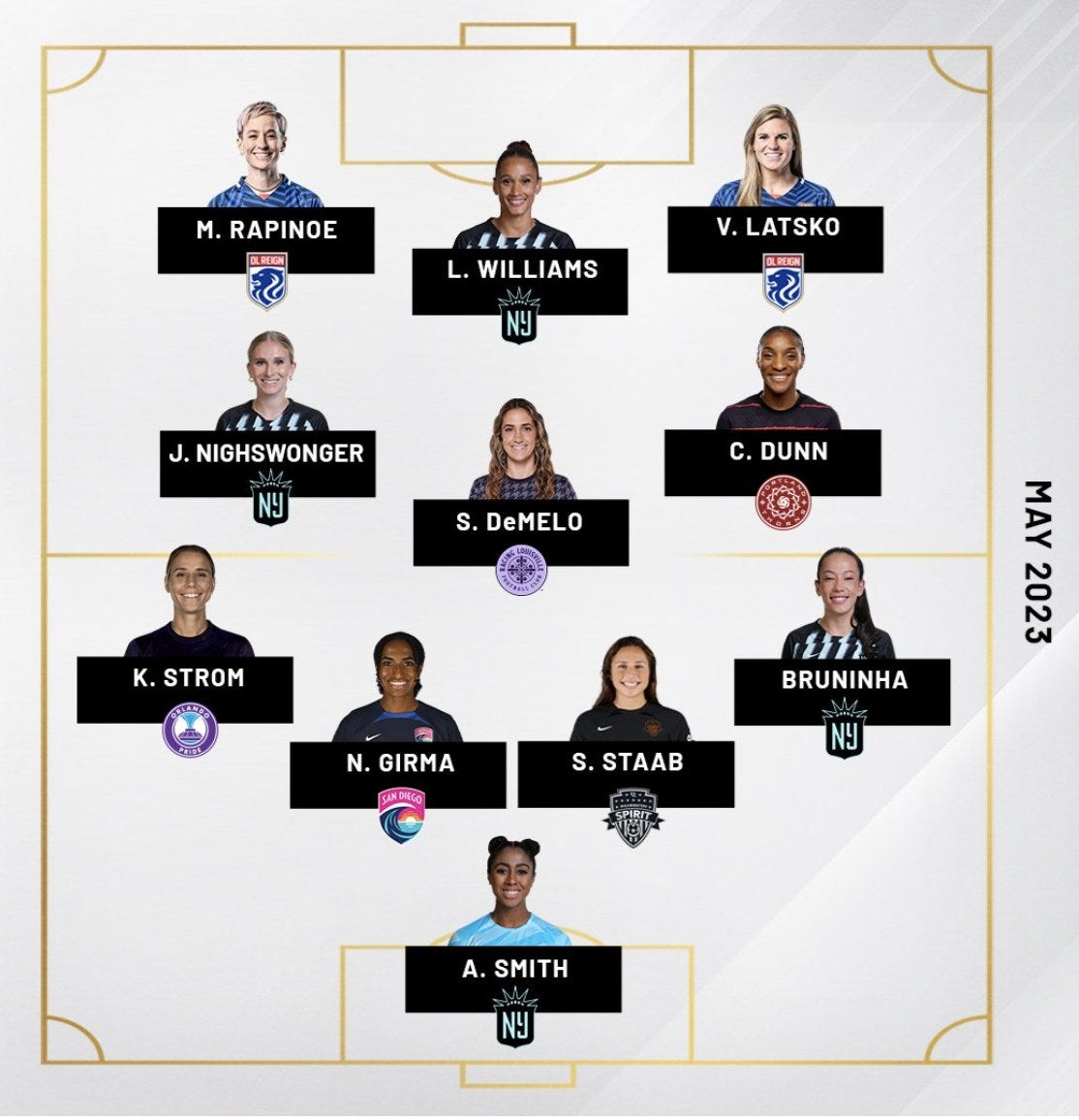Algorithmic Thinking
This is Issue #3 of Seeing the Present, a newsletter about my thoughts on current global trends in soccer, with an eye toward what they might tell us about the future of the beautiful game.
For most people, the word “algorithm” might conjure up thoughts of the secretive black box that decides what goes on their Twitter feed or the mysterious computer math behind the latest artificial intelligence models.
But an algorithm simply means “a process or set of rules to be followed in calculations or other problem-solving operations” (Oxford), and algorithmic approaches can be very helpful in structuring our own thought processes.
I was hired as Assistant General Manager & Chief Soccer Officer at Gotham FC in part because I promised to bring a more analytical decision-making framework to the club (think Moneyball). But designing a robust analytical decision-making framework isn’t restricted solely to quantitative questions; it’s about approaching all decisions thoughtfully and methodically even before crunching any numbers. With some very basic algorithms, we were able to exploit some of the structural weak points in the women’s game to our advantage.
Here’s a simple algorithm we used repeatedly to find some not-so-secret gems:
Step 1: Look at the rosters of the top ~10 national teams in the world.Step 2: Scout the young players who don’t play for a “big” club.That’s it. Maybe it seems too plain, but it’s a set of instructions we followed regularly to produce a specific output. Of course, further study of the players we found through this algorithm with our scouts, data analysts, and coaches was crucial in determining whether we actually believed they would be a good fit for the club, but the method itself proved really effective as a first filter in helping us find promising talent in the transfer market.
The main premise underlying the algorithm is this: If a player is good enough to play with other players who play for big clubs, then that player is presumably also good enough to play for a big club.
At that point, it’s mostly a matter of time until a big club notices and signs the player, and what we wanted to do was beat other clubs to that realization. This approach doesn’t work nearly as well on the men’s side, where scouting networks are already built out in such a way that those players rarely fall through the cracks, and big clubs snap them up before they become regulars for a top national team. I expect that it will become outdated on the women’s side soon, too.
One real-life application of this algorithm is the case of Victoria Pelova. In 2021, she was the third-youngest player in the Dutch squad at the Tokyo Olympics; in 2022, she was the fourth-youngest player to start in the Netherlands’ only knockout match at the UEFA Women’s Euro. Going into the tournament, the Netherlands were #4 in the FIFA Ranking (Step 1 ✅), and while some of Pelova’s superstar teammates played for powerhouse clubs like Arsenal and Lyon, she had been playing for Ajax since 2019 in the comparatively more modest Dutch league (Step 2 ✅). Based on that information alone, I found it rather surprising that she hadn’t already made the jump to a higher-profile league.
Following this algorithm, Pelova rocketed up my list of players for us to scout more closely. We thought there were certain parts of her game that would translate to the NWSL better than others, but she was certainly talented enough for us to keep tabs on her. Although we never got to the point of making a formal offer, we were right to think that it was a matter of time until another big club made a move: she signed with Arsenal in January 2023 and established herself as a starter in her first full season with the club. (Unfortunately, she suffered an ACL tear this summer and will be out for most of the upcoming FAWSL season.)

A player we did sign who met the algorithm’s criteria was Bruninha. She impressed as Brazil’s captain at the U20 World Cup in 2022, but good performances at the youth level don’t always translate to good performances at the senior level. However, the fact that she had already earned 5 caps with the senior national team across three different international windows in 2021 made us substantially more confident that she would be able to adjust successfully from Santos in the Brazilian league to Gotham in the NWSL. Indeed, Bruna was a crucial player on our journey to the championship, earning a place on the NWSL Team of the Month in May 2023 after scoring two bangers in back-to-back games.
While this simple algorithm’s usefulness will probably wane with time as scouting operations in the women’s game come to identify talent earlier and earlier, some recent transfers indicate that it may yet help some clubs see what’s right in front of their noses.
One of Pelova’s Dutch teammates, Esmee Brugts (21), played every game for the Netherlands at the 2023 World Cup; she promptly secured a move from PSV to Barcelona. Over in Brazil, Tarciane (21) and Aline Gomes (19) both made the senior national team’s roster for the 2023 Women’s Finalissima. A year later, they transferred from the Brazilian league to the NWSL: Tarciane from Corinthians to Houston Dash and Aline from Ferroviária to North Carolina Courage.
Looking at some of the Olympic rosters, there’s plenty of talent that meets both criteria in the algorithm. In fact, three of the players that started for Brazil in the final are 23 or under and still play in the Brazilian league. So don’t be surprised if you see Duda Sampaio, Jheniffer, or Vitoria Yaya on the radar of some American and European clubs soon!





love this! Especially making it in such easy steps.
I have been doing a similar way of "Scouting" I guess by looking at regions with great talent but no exposure.